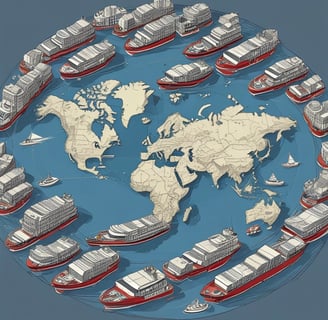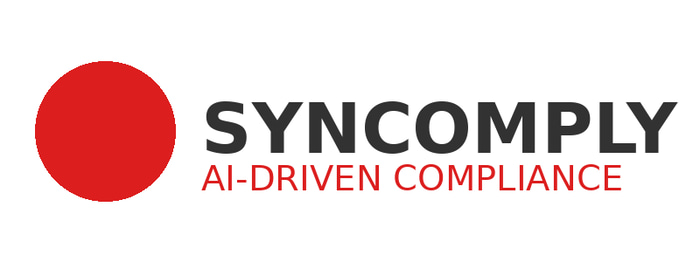Navigating Tax Tariffs and Automation: Ensuring Compliance with AI Solutions
4/10/20257 min read


Introduction to Tax Tariffs and Automation
Tax tariffs represent vital components of countries’ economic frameworks, significantly influencing international trade by imposing charges on imported and exported goods. They serve not only to regulate the inflow of foreign products but also to protect domestic industries while generating revenue for the government. As international trade evolves, so too does the complexity of tax tariffs, necessitating thorough understanding and compliance from affected businesses. Failure to adhere to these regulations can lead to financial penalties and possible reputational damage, emphasizing the necessity for effective management of tax obligations.
In this context, automation emerges as a powerful tool for ensuring compliance with tax tariffs. Over the past few years, organizations have increasingly turned to automation solutions to alleviate the burdens of manual tax management processes. Automated systems harness artificial intelligence (AI) technologies to assess, analyze, and apply the myriad of regulations pertinent to tax tariffs. These solutions significantly reduce the risk of human error, improve efficiency, and minimize compliance costs, enabling businesses to focus on core operations while remaining assured that their tax responsibilities are managed effectively.
Moreover, with the rapid globalization of economies, businesses face an ever-growing complexity of tax regulations, particularly when dealing with cross-border transactions. Automation facilitates real-time updates on tax tariff changes, ensuring organizations remain compliant with the latest regulations. Additionally, AI-enabled solutions have the capability to integrate with existing enterprise resource planning (ERP) systems, allowing for seamless data exchange and improved tracking of tariffs across various jurisdictions. As a result, businesses can navigate the intricate landscape of tax tariffs with enhanced agility and confidence.
Overall, the intersection of tax tariffs and automation presents significant opportunities for businesses aiming to refine their compliance strategies. By embracing these technological advancements, organizations can position themselves to adapt to the evolving regulatory landscape, ensuring ongoing adherence to tax obligations while optimizing resource allocation.
Understanding Tax Tariffs: Definition and Impact
Tax tariffs, often referred to simply as tariffs, are government-imposed taxes levied on imported and, in some cases, exported goods. These taxes serve multiple purposes, ranging from generating revenue for the government to protecting domestic industries from foreign competition. By imposing tariffs, a government can make imported goods more expensive, thereby encouraging consumers to purchase locally produced items. This practice plays a significant role in shaping international trade dynamics and influencing economic relationships among countries.
The impact of tariffs extends beyond the immediate revenue generated; they can significantly affect various industries and the economy as a whole. For businesses engaged in international trade, tariffs can lead to increased costs of goods, which may necessitate adjustments in pricing strategies. Furthermore, tariffs can disrupt supply chains, as companies may be required to source materials from different countries to avoid higher taxes on imports. Such disruptions can hinder operational efficiency and affect a company's competitiveness in the global market.
To navigate these challenges, businesses must prioritize compliance with varying tariff regulations across different countries. Non-compliance can result in hefty fines and penalties, not to mention the potential damage to a company's reputation. It is crucial for companies to stay informed about changes in tariff laws and to adopt strategies that ensure adherence without compromising profitability.
For instance, businesses can leverage technology to enhance their compliance efforts. Automated systems and artificial intelligence (AI) solutions can assist in tracking tariff classifications and calculating duties more accurately, minimizing the risk of errors. By employing these technologies, firms can streamline their operations, thus better positioning themselves to manage the complexities associated with tax tariffs effectively.
The Role of Automation in Tax Compliance
Automation plays a crucial role in enhancing tax compliance processes for businesses of all sizes. With the increasing complexity of tax regulations, companies need efficient ways to track their tax obligations accurately. AI-driven tools and software solutions have emerged as vital resources that streamline these processes, ensuring that organizations remain compliant while mitigating the risks of errors and oversights.
One notable area where automation significantly improves tax compliance is in the calculation and tracking of tax obligations. Advanced AI algorithms can assimilate and analyze vast amounts of financial data to provide precise calculations based on current tax laws. This capability not only saves considerable time but also reduces the risk of human error that often accompanies manual calculations. Moreover, these automated systems can continuously update to reflect any changes in tax legislation, thus helping businesses stay aligned with regulatory requirements.
In addition to calculations, AI solutions are instrumental in facilitating the accurate filing of tax returns. Many software applications enable users to generate and file returns with minimal manual input, thereby enhancing the overall efficiency of the compliance process. Features such as real-time tracking and alerts inform users of deadlines and potential discrepancies, further promoting adherence to tax obligations. Effective documentation management is another key benefit of automation; businesses can maintain organized digital records, making it simple to retrieve essential documents during audits.
Overall, the implementation of AI tools for tax compliance not only streamlines processes and enhances accuracy but also provides businesses with the confidence to navigate the complexities of their tax responsibilities. Automation in this domain is pivotal in fostering an environment where organizations can focus on their growth while ensuring that compliance is managed effectively and efficiently.
AI and Conformity in Tax Compliance
In an increasingly globalized economy, businesses often find themselves operating across multiple jurisdictions, each with its own complex set of tax regulations. Conformity in tax compliance is crucial for these organizations as it helps to mitigate the risks associated with non-compliance, such as financial penalties and reputational damage. It is essential for businesses to not only understand their local tax laws but also to stay informed about the ever-changing regulatory landscape in other regions where they operate.
Artificial Intelligence (AI) plays a vital role in ensuring conformity in tax compliance. By leveraging advanced algorithms and machine learning, AI solutions can analyze and adapt to various tax frameworks, ensuring that businesses remain compliant regardless of location. These technologies can efficiently process vast amounts of data, identify inconsistencies, and automatically update tax obligations according to the latest legal requirements.
For example, AI-driven tax compliance software can integrate real-time updates from government databases to keep itself aligned with new tax regulations. This adaptive feature is beneficial for multinational corporations that face diverse tax regimes. Companies can employ AI systems to automate tax reporting, which reduces the risk of errors and facilitates timely submissions—crucial factors that contribute to compliance.
Additionally, AI can help in interpreting complex tax laws by providing tailored recommendations based on specific business activities. The technology can analyze historical data to predict potential tax liabilities and compliance risks, thereby enabling proactive measures. As a result, organizations are better equipped to make informed decisions that align their operations with regulatory standards across various jurisdictions.
In conclusion, the integration of AI solutions not only streamlines tax compliance processes but also enhances conformity, enabling businesses to navigate the multifaceted landscape of international tax regulations effectively.
Challenges and Solutions in Tax Automation
As businesses increasingly turn to automation for tax compliance, they encounter a series of challenges that necessitate careful consideration. One significant concern is data security. Automated systems often handle sensitive financial information, making them attractive targets for cyber threats. It is imperative for organizations to implement robust cybersecurity measures, such as encryption and access controls, to safeguard this data. Regular security audits and updates are also essential to mitigate risks associated with evolving cyber threats.
Integration issues represent another challenge in the context of tax automation. Businesses often use multiple software systems that need to communicate effectively for seamless tax compliance. Incompatibility among these systems can lead to inaccuracies in data reporting and overall inefficiency. To address this, companies should select tax automation solutions that offer easy integration with existing platforms. Choosing software that adheres to industry standards can facilitate smoother data exchange and minimize integration hurdles.
Cost is yet another concern that businesses must navigate when implementing tax automation solutions. The initial investment for advanced tax technology can be substantial, which may discourage some organizations from adopting these systems. However, it is essential to view this expenditure as a long-term investment that can yield significant returns through increased efficiency, reduced risk of penalties, and improved accuracy in compliance. Businesses should also explore various pricing models and solutions to find the one that best fits their financial capabilities.
To further assist in overcoming these challenges, continuous monitoring and evaluation of tax automation tools is crucial. Regular assessments can help identify operational gaps and ensure that the chosen technology remains up-to-date and effective in meeting compliance requirements. By prioritizing data security, ensuring integration with existing systems, managing costs wisely, and maintaining ongoing oversight, businesses can successfully navigate the complexities of tax automation.
Conclusion: The Future of Tax Compliance with AI and Automation
The integration of artificial intelligence (AI) and automation within the realm of tax compliance marks a pivotal evolution in how businesses approach regulatory obligations. As discussed throughout this article, the emergence of AI technologies offers significant advantages, from streamlining processes to enhancing accuracy in compliance. These innovations enable organizations to manage their tax obligations more effectively, minimizing the risk of non-compliance and the resulting penalties.
Furthermore, as tax regulations become increasingly complex and dynamic, AI-driven solutions are positioned to adapt quickly to these changes. Businesses can leverage machine learning algorithms to monitor regulatory updates in real-time, allowing them to adjust their compliance strategies proactively rather than reactively. This capability not only aids in achieving compliance but also supports broader financial strategies by improving operational efficiency and reducing administrative burdens.
Adopting AI-powered tools will not only ensure compliance with existing tax laws but also prepare businesses to adapt to future regulatory transformations. In an era where technology is increasingly intertwined with business processes, aligning tax compliance strategies with technological advancements will be crucial for sustained success. Ultimately, the future of tax compliance lies in the effective integration of AI and automation, driving innovative strategies for organizations as they navigate the complexities of tax compliance in an ever-changing environment.
Navigating tax tariffs in today’s complex economic landscape requires vigilance and expertise, especially as automation takes center stage. Businesses must ensure compliance with ever-evolving regulations, which can be challenging without the right tools. AI solutions have emerged as powerful allies in this endeavor, streamlining processes and providing real-time insights into tariff classifications and compliance requirements. SynComply.com stands ready to support companies in this transition, offering tailored AI-driven systems that simplify the intricacies of tax compliance. With SynComply’s expertise, businesses can not only navigate the complexities of tax tariffs efficiently but also leverage automation to stay ahead of regulatory changes, enabling them to focus on growth and innovation while minimizing risks associated with non-compliance.
